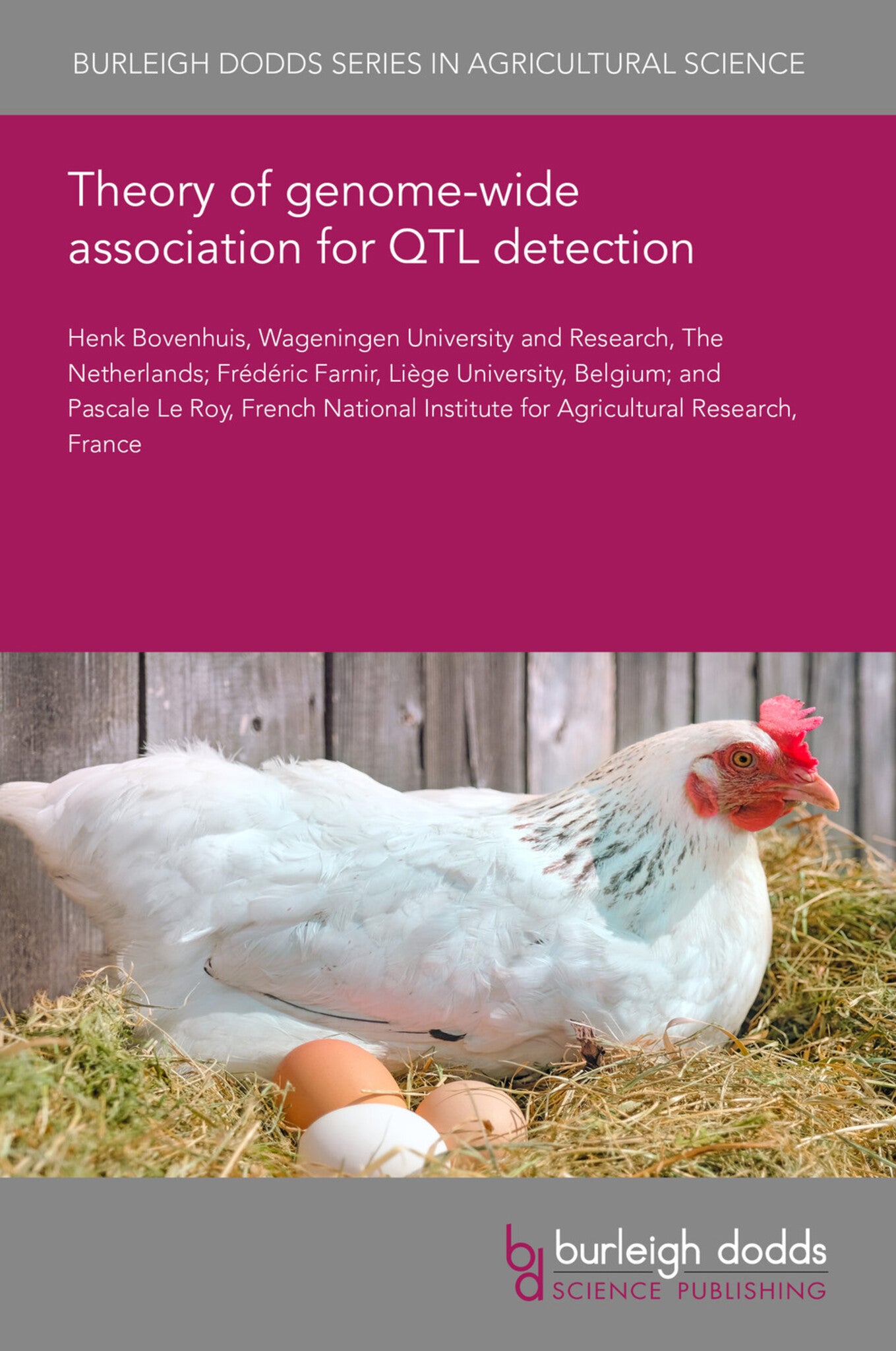We're sorry. An error has occurred
Please cancel or retry.
Theory of genome-wide association for QTL detection
Regular price
£25.00
Sale price
£25.00
Regular price
£25.00
Unit price
/
per
Sale
Sold out
Re-stocking soon
To identify the regions on the genome that influence traits, Genome Wide Association Study (GWAS) uses the information of Linkage Disequilibrium (LD) between a QTL and neighboring genetic markers. ...
Read More

Some error occured while loading the Quick View. Please close the Quick View and try reloading the page.
Couldn't load pickup availability
- Format:
-
20 July 2020

To identify the regions on the genome that influence traits, Genome Wide Association Study (GWAS) uses the information of Linkage Disequilibrium (LD) between a QTL and neighboring genetic markers. LD is created by mutations and recombinations, but populations mixture also generates gametic phase disequilibrium at the genome level. Commonly GWAS are performed using a mixed model. The statistical model contains the unknown SNP effect and interest is in estimating this effect based on the sample obtained from the population, and testing its significance. Instead of analyzing one SNP at a time, it is also possible to include all SNP simultaneously in the model. It is common to control the overall type 1 error rate to avoid false positives. A single SNP GWAS analysis of egg weight in layers illustrates this chapter on the theory of GWAS for QTL detection. In conclusion, GWAS advantages and limitations are discussed.

Price: £25.00
Publisher: Burleigh Dodds Science Publishing
Imprint: Burleigh Dodds Science Publishing
Series: Burleigh Dodds Series in Agricultural Science
Publication Date:
20 July 2020
ISBN: 9781786767806
Format: eBook
BISACs:
TECHNOLOGY & ENGINEERING / Agriculture / Animal Husbandry, Poultry farming, TECHNOLOGY & ENGINEERING / Agriculture / Sustainable Agriculture, Sustainable agriculture, Animal breeding

1 Introduction 2 Principles of genome-wide association studies (GWAS) 3 Statistical methods 4 Using a genome-wide association study (GWAS) for QTL detection in poultry 5 Conclusion 6 References



